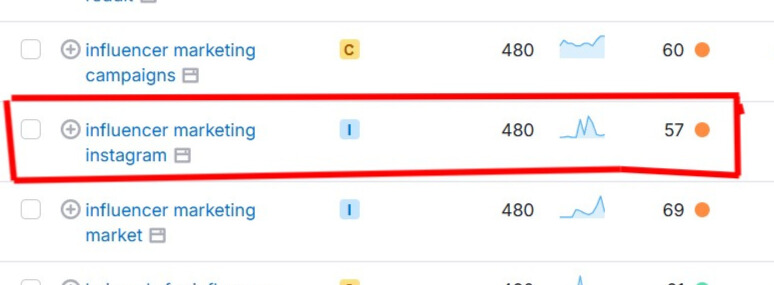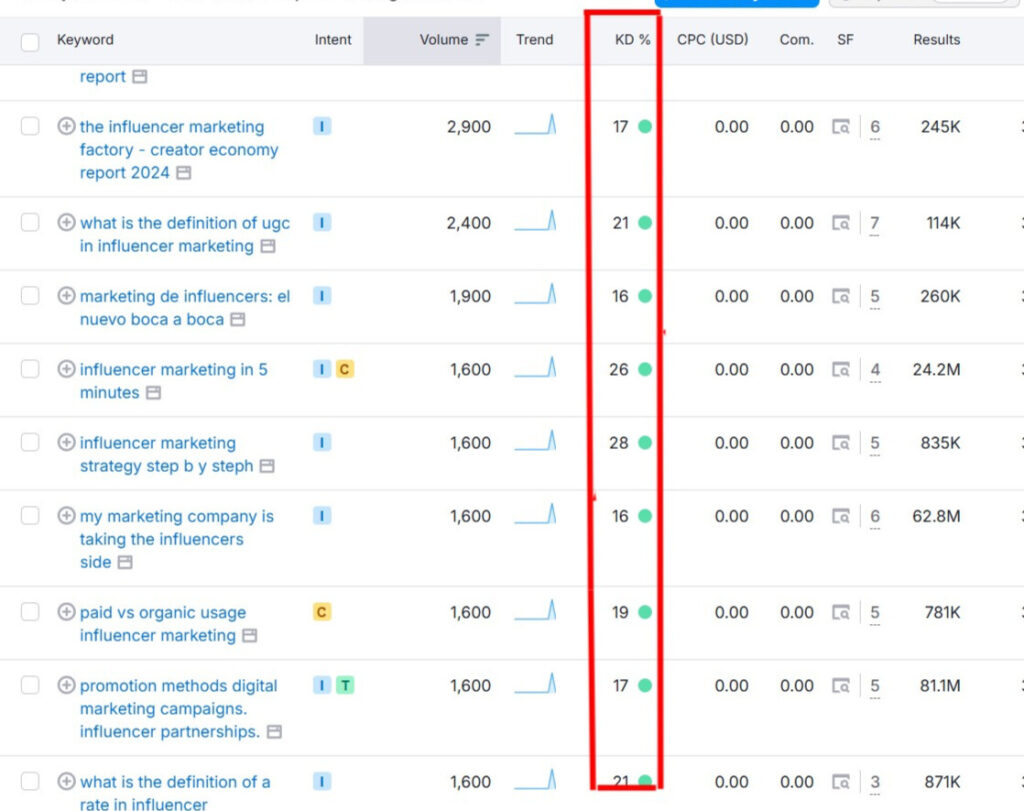Keyword difficulty is one of the most important SEO metrics. Although never officially promoted by Google and is not a ranking signal either, most SEO professionals still understandably give a lot of importance to this metric. It is almost an unavoidable metric, especially while conducting keyword research.
There is actually no point in conducting keyword research without taking into account keyword difficulty score.
Most SEO professionals know very well that without taking keyword difficulty into account, it is almost impossible to run their SEO campaign effectively. In all probability, their campaign will wobble and collapse under the weight of its own uncertainty.
Keyword difficulty essentially acts like a guiding light, showing the right path amid plausible uncertainties and thereby increasing the chances of the campaign’s success.
Understanding Keyword Difficulty Score:
Keyword difficulty score basically provides valuable insight into the competitiveness of a particular keyword or keywords. This insight roughly tells us how hard or easy it will be to rank for a specific keyword on Google’s first page.
Expectedly, this insight is expressed through a score, ranging from 0 to 100. Anything near 0 (0-15 and 0-30) is considered easy to rank for, while anything near 100 (50-100 or 75-100) is considered difficult and hard to rank for.
Symbolically, keyword difficulty score is represented as KD %.
Kindly check the below table for complete keyword difficulty score.
| Keyword Difficulty Score | Description |
| 0-15%. | Very easy to rank for. |
| 15-30%. | Comparatively easy to rank for. |
| 31-50%. | Moderately difficult to rank for. Some competition exists. |
| 51-70%. | Challenging to rank for. Higher competition exists. |
| 71-90%. | Very difficult to rank for. Highly competitive keywords. |
| 91-100.. | Extremely difficult. Impossible to rank without high-quality backlinks. |
Officially the above-mentioned scores are not universally applicable, and there could be a minor fluctuation depending on the tool you are using. That said, more or less these scores are considered as a benchmark for classifying the keywords on the basis of ranking difficulty.
Notably, without exception, all SEO and keyword research tools use the keyword difficulty score metric. This again underlines the sheer importance of this metric.
Equally important to note is that different tools use different methods for calculating the score. This is the reason why many a time two tools might show different scores for the same keyword.
For instance, SEMrush can show that the keyword ‘Pinterest alternative’ has a KD score of 15-30%, which means that it is easy to rank. On the other hand, Ahrefs could show that the same keyword has a KD score of 30-45%, which means that the keyword is moderately competitive.
The difference in scores can create serious confusion and even trust issues. It is critical to remember that most popular tools have nearly 70-80% accuracy and hence there is always an outside chance that their scores could be inaccurate. This implies that a tool might show low difficulty score for a certain keyword and this could prompt you to target the keyword, while in reality the keyword could be difficult to rank for.
Despite the minor inaccuracies, many of these tools have become the mainstay of the SEO industry. That’s because even 70-80% accuracy gives more than enough chance to substantially increase your website’s organic traffic.
How to check out keyword difficulty score?
Let us try to understand this with an example.
Let’s suppose you have started a new website dedicated to influencer marketing and you want to increase your website’s organic traffic by publishing certain number of blogs each month, with each blog targeting a specific keyword related to influencer marketing.
In this example, we have used the SEMrush tool for keyword research.
Considering that your website is barely few months old, it will obviously have a low domain authority, which basically implies that Google currently does not see your website as trustworthy.
This apparently means that your website will have to target keywords with low difficulty score,.
Now check out the below example:
During the keyword research exercise, we experimented with different seed keywords like ‘influencer marketing,’ ’influencers’ so and so forth.
One interesting keyword we came across keyword was ‘influencer marketing strategy.’

But It has a KD score of 68, which means that the low authority website like yours will find this keyword difficult to rank for.
We also came across another keyword ‘influencer marketing Instagram.’

This keyword also has a high difficulty score of 57%, again this keyword is difficult to rank for.
Now checkout the below screenshot.

Here we’ve found two keywords ‘Influencer leaks’ and ‘influencer leaked,’ after using seed keyword ‘influencer.’ Both have low KD score of 28% and 16% respectively, making these keywords relatively easy to rank for. This means that you can invest all your time and energy to write a blog post around these keywords.
Considering their low difficulty scores, you can be more than hopeful that your blog post can rank on Google’s first page for these keywords.
For the sake of simplifying the keyword research, we applied the KD filter ‘easy to rank’ and came across quite a few keywords that our website could possibly rank for.

Likewise, you can easily check the keyword difficulty score of any keywords related to your niche or industry on SEMrush or any other tool that you’re comfortable with.
Kindly note that all popular SEO tools have pretty much the same interface and hence you can easily interchange or swap between the tools.
Keyword difficulty score gives a clear direction or hint to your website whether investing time and effort on a certain keyword is really worth it or not.
Why keyword difficulty score is important for success of SEO campaign?
As mentioned above, KD score serves as a guiding light for your SEO campaign. To simplify it further, it gives a clear direction or hint to you whether investing time and effort on a certain keyword is really worth it or not.
Let’s try to understand this with the help of the example used in the above section.
Let’s hypothetically imagine that without conducting any keyword research, you randomly decide to target the keywords ‘‘influencer marketing strategy’ and ‘influencer marketing Instagram’ for your low authority website.
You spend several days for writing comprehensive and detailed blog posts, while spending equally precious amount of time on designing infographics and sourcing statistics and data from reliable sources.
While your sincere efforts may have helped in writing the best blog posts on the concern topics, it still won’t be good enough to rank on Google’s first page.
Since no keyword research was conducted, you were left completely unaware that these keywords have high KD score. Had you conducted the keyword research, you’d have come to know the actual KD score of these keywords.
This would have spared you from investing your precious time and efforts in going behind wrong keywords. Instead, you could have invested it in keywords that have realistic chances of ranking and thereby attracting organic traffic for your website.
This is exactly why keyword difficult score is called the guiding light, telling exactly which direction your campaign should take and which path it should give amiss.
Without this guiding light, your campaign will hit a dead end and with that all your efforts, time and money will go down the drain.
Focusing on keyword difficult score also paves for other long-term SEO benefits. These benefits are as follows:
Substantial Increase in Organic Traffic: keyword difficulty score helps in unlocking organic traffic for your website. It helps in narrowing down your focus on keywords that can potentially bring lot of traffic, while effectively filtering out keywords that are beyond your website’s reach.
Increase in brand awareness: As your website starts ranking for more keywords and sees robust increase in organic traffic, more and more people are likely to see your website in a positive light. Ultimately, increasing your website’s trustworthiness and reputation.
Strengthens backlink profile: Increase in brand awareness potentially opens backlink opportunities. As more people start trusting your website, they are more likely to link to it. Over the course of time, this will strengthen your websites over all backlink profile.
Increase in domain authority: Your website’s domain authority could increase sharply as result of your unrelenting focus on the keyword difficulty score. Once your website’s domain authority increases, you can start targeting keywords with high KD score, which will further increase your website’s organic traffic.
Keyword Difficulty Score and Domain Authority:
Keyword difficulty score and domain authority are intrinsically connected. As hinted above, you must always settle for KD score that is in accordance with your website’s domain authority. This means If your website has a low domain authority then you must invariably settle for keywords with low difficulty score and vice versa.
Simply put, a website’s domain authority and keyword difficulty score are always proportionately related to each other.
Conclusion:
While focusing on Keyword difficulty score is no doubt important, it is equally critical to focus on other factors like search volume, keyword trending, keyword type, and SERP analysis. This holistic approach will help in increasing the chances of your campaign’s success by manifold. Over all, spotting keywords with right KD score is akin to finding a master key that can open the floodgates of organic traffic for your website. However, the results can be equally detrimental if for some reason you’re messing up with keyword difficulty score while performing keyword research.

